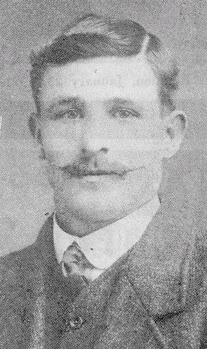Sgt
Ambrose Manson
Information about birth
|
Date of birth: 24/05/1892 |
|
Place of birth: Takaka, Golden Bay, District Tasman, New Zealand |
General information
|
Profession: Labourer |
Army information
|
Country: New Zealand |
|
Force: New Zealand Expeditionary Force |
|
Rank: Sergeant |
|
Service number: 6/1614 |
|
Enlistment date: 14/12/1914 |
|
Enlistment place: Trentham, Wellington, New Zealand |
|
Units: — Canterbury Regiment, 2nd Bn. (Last known unit) |
Information about death
|
Date of death: 13/12/1917 |
|
Place of death: Polderhoek Château, Belgium |
|
Cause of death: Killed in action (K.I.A.) |
|
Age: 25 |
Cemetery
|
Polygon Wood Cemetery Plot: / Row: D Grave: 15 |
Distinctions and medals 2
|
British War Medal Medal |
|
Victory Medal Medal |
Points of interest 2
| #1 | Place of birth | ||
| #2 | Enlistment place |
My story
Ambrose Manson served in the Canterbury Regiment 2nd Battalion, part of the 2nd New Zealand Brigade, of the New Zealand Division. He was the son of William and Catherine Manson, of Little River, Christchurch, New Zealand.
The New Zealand Division was in the Polygon Wood area, after the end of the Third Battle of Ypres. Much of the time was spent in wiring, repairing crumbling trenches and improving defences. The landscape was covered with waterlogged shell holes. The right of the New Zealand position was enfiladed from Polderhoek and a decision was made to capture the spur on which the ruins of Polderhoek Chateau and German pillboxes sat.
After the unsuccessful attack on Polderhoek on 3 December 1917, the various battalions took turns in the line and in reserve. Neither the New Zealand Division history or that of the Canterbury Regiment give detailed information for the December 1917-February 1918 period so it is impossible to say with any certainty how Ambrose Manson died. The opposing German forces generally held higher ground and movement in the New Zealand lines was often observed and shelled or machine-gunned.
The 2nd Canterbury Battalion is however mentioned in the history of the Otago Regiment. His battalion, which was in support, was heavily shelled on 12-13th December and it is possible this caused his death on 13 December 1917, aged 25. He was buried in Polygon Wood Cemetery, Row D, Grave 15.
The New Zealand Division was in the Polygon Wood area, after the end of the Third Battle of Ypres. Much of the time was spent in wiring, repairing crumbling trenches and improving defences. The landscape was covered with waterlogged shell holes. The right of the New Zealand position was enfiladed from Polderhoek and a decision was made to capture the spur on which the ruins of Polderhoek Chateau and German pillboxes sat.
After the unsuccessful attack on Polderhoek on 3 December 1917, the various battalions took turns in the line and in reserve. Neither the New Zealand Division history or that of the Canterbury Regiment give detailed information for the December 1917-February 1918 period so it is impossible to say with any certainty how Ambrose Manson died. The opposing German forces generally held higher ground and movement in the New Zealand lines was often observed and shelled or machine-gunned.
The 2nd Canterbury Battalion is however mentioned in the history of the Otago Regiment. His battalion, which was in support, was heavily shelled on 12-13th December and it is possible this caused his death on 13 December 1917, aged 25. He was buried in Polygon Wood Cemetery, Row D, Grave 15.
Sources 2
|
Byrne A.E., Official History of the Otago Regiment, N.Z.E.F. in the Great War 1914-1918, (Dunedin, Wilkie & Co, Ltd., s.d), p 238 - 241. Sources used |
|
Service Records http://ndhadeliver.natlib.govt.nz/delivery/DeliveryManagerServlet?dps_pid=IE19025182 Sources used |
More information 5
|
Commonwealth War Graves Commission Database https://www.cwgc.org/find-records/find-war-dead/casualty-details/480049 |
|
Namenlijst (In Flanders Fields Museum) https://namenlijst.org/publicsearch/#/person/_id=f2457f31-6651-4cde-93b3-744dd6633881 |
|
Lives of the First World War (Imperial War Museum) https://livesofthefirstworldwar.iwm.org.uk/lifestory/7179485 |
|
The NZEF Project (UNSW Canberra) https://nzef.adfa.edu.au/showPerson?pid=157005 |
|
Online Cenotaph (Auckland Museum) https://www.aucklandmuseum.com/war-memorial/online-cenotaph/record/c10316 |
